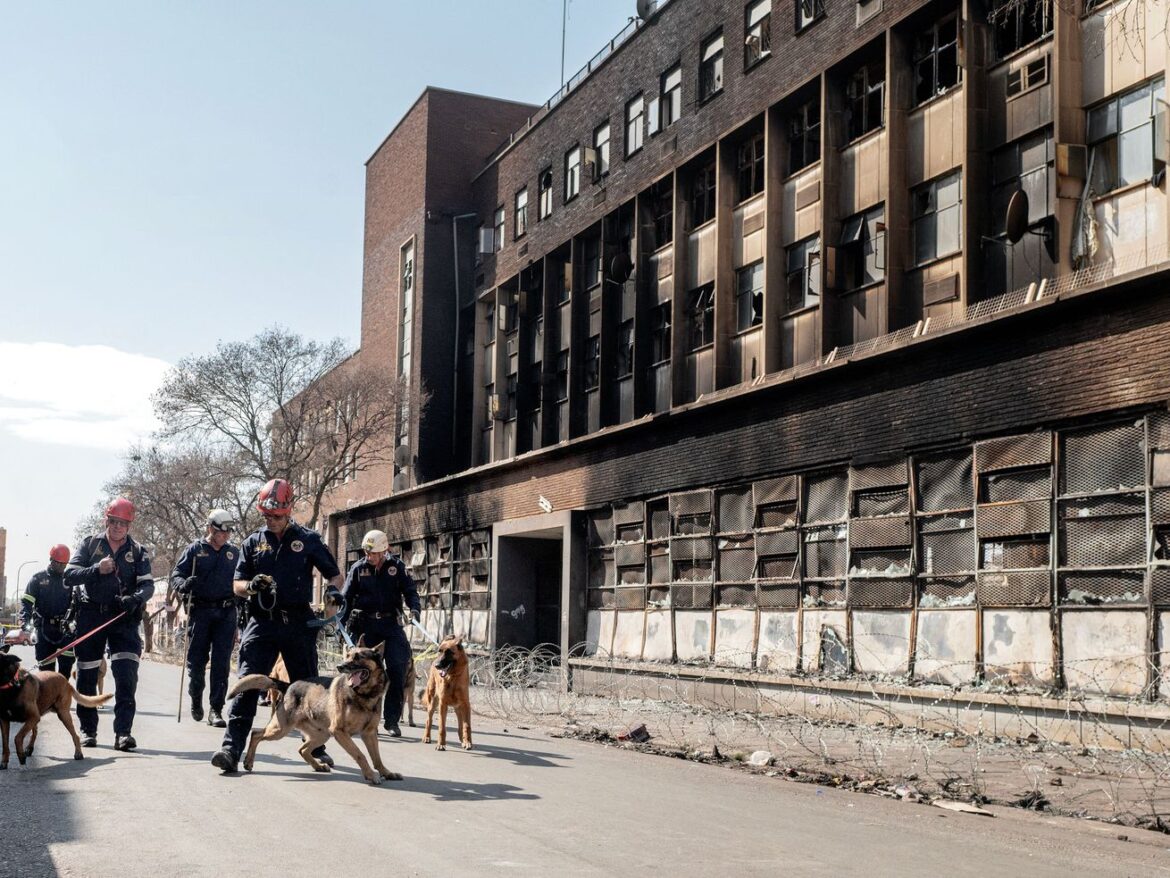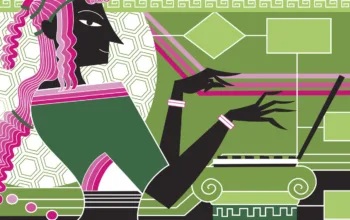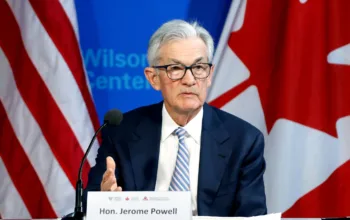Chaos, poverty, and unemployment on a national scale set the stage for Thursday’s fire.
An apartment fire in the South African city of Johannesburg has killed at least 76 people including 12 children and highlighted the city’s housing crisis, which has led to terrible conditions in unregulated dwellings run by criminal gangs.
The fire — the worst in South Africa’s history — broke out Thursday night, quickly engulfing the five-story building in Johannesburg’s Central Business District. Around 600 people were estimated to be living in the building, although officials couldn’t say how many were present when the fire started. People desperate to escape the fire threw their children out of windows or jumped themselves, since the building did not have proper escape routes.
“This has given us a wake-up call, and I have said that our cities and municipalities must now pay attention to how people live,” South African President Cyril Ramaphosa said Saturday at an event for the ruling African National Congress party. Though as Ramaphosa indicated the lack of enforcement of existing laws against such dangerous and exploitative living situations certainly led to Thursday’s fire, there are deeper social problems underlying the housing crisis.
So-called “hijacked” buildings are not a new phenomenon in Johannesburg; gangs take over abandoned buildings in the city center and charge people with no other options rent to essentially squat there. Though the city is the wealthiest in South Africa, there is a huge gulf between those with resources — many of whom live in the suburbs — and those without.
In this particular building people lived in squalid conditions and even squatted in the below-ground parking garage, according to the Associated Press. Many of the people who lived in the now-destroyed building were not South African citizens, city officials told the AP, and may have been in the country illegally. That could make identifying victims and notifying their families challenging if not impossible.
It’s not yet known what caused the fire, though some early reports indicated a candle may have been the initial spark; many residents lit and heated their homes using fires and candles, Mgcini Tshwaku, a local government official told the AP. Residents had also set up makeshift homes in the building, using flammable materials like cardboard and textiles as walls; garbage was piled in and around the building, and the locked security gates prevented many people from escaping.
Whatever the initial source of the fire, the real causes are far deeper and more complex, and they put hundreds — perhaps even thousands — more people at risk in dangerous living conditions. Lt. Gen. Elias Mawela, police commissioner of the Guateng province, said at the scene that there were approximately 700 similar buildings in central Johannesburg, and a New York Times report indicates that many of them suffer from conditions similar to the destroyed building.
Social problems like poverty and inequality are at the root of the Johannesburg fire
There are laws in South Africa to keep people from illegally occupying buildings like the one destroyed on Thursday, but they aren’t well-enforced and courts often halt evictions, even if the buildings are illegally occupied and unsafe. The Prevention of Illegal Eviction Unlawful Occupation of Land Act (PIE) Act, passed in 1998 to undo apartheid-era legislation that allowed the white government to evict Black South Africans and destroy their residences, makes granting an eviction difficult.
The people who live in Johannesburg’s abandoned buildings are among the poorest of Johannesburg’s poor and have nowhere else to go. “No one chooses to live in a hijacked building,” Brian McKechnie, an architect and heritage expert in Johannesburg told the Times. “They were only there because they were desperate.”
Ramaphosa and others have blamed city officials for the fire, and they certainly deserve at least some of that blame; residents pleaded for help from the police and fire services, and inspections dating back at least to 2019 show how desperately bad and dangerous living conditions were there. That year, after city inspectors’ reports, police raided the building and arrested 140 people for illegally charging rent — but city officials haven’t been in since, even though it’s a municipally-owned building.
As the New York Times reported Saturday, there were multiple indications that the building was, in the words of former Johannesburg Mayor Mpho Phalatse, “frankly not habitable.” Phalatse visited the building in January 2019 and described its squalid and dangerous conditions to the Times after the fire. At the time Phalatse visited the building, she saw open sewage and unaccompanied children wandering the halls of the building in dirty clothes; a later report noted blown-out electrical outlets and melted wires in the rooms.
But the problem is much more widespread and complex than just poor conditions in one building — political conditions in Johannesburg and high poverty and inequality in the nation overall set the stage for Thursday’s horrific fire.
Johannesburg has been in a state of chaos over the past few years; as the ANC has lost its dominance in municipal politics throughout the country, smaller parties have led Johannesburg’s city council in coalition — only to throw the body into disarray when those coalitions break. That has meant more than six mayors have led the city in the past two years, making it difficult to enact any one political platform, or any real change for Johannesburg’s residents.
South Africa is Africa’s most industrialized economy, yet has one of the world’s highest unemployment rates — officially about 33 percent, though it is likely higher. The country also suffers from an affordable housing crisis, exacerbated by conflict and poverty in other African nations which has pushed hundreds of thousands of migrants to the country since the end of apartheid, as well as a poverty rate around 55 percent in 2014, according to an an April World Bank report, 55 percent of South Africans lived at or below the national poverty line in 2014.
It’s also one of the most unequal countries in the world, due in part to “structurally high inequality of opportunity,” according to the World Bank. That high inequality of opportunity is part of the legacy of colonialism and apartheid that persists in South Africa, despite the end of apartheid in the early 1990s and the election of Nelson Mandela as the country’s first Black and democratically-elected president.
Johannesburg is a prime example of that inequality and of the legacy of apartheid as the Times noted in a recent report; while illegally-run, dangerous and shoddy housing proliferates in the city center and services like garbage collection and policing are hard to obtain, glitzy malls and stately homes fill the suburbs and trendier parts of the city.
The now-destroyed building itself was a ghost of the country’s apartheid past. During the era of white rule, Black South Africans were forced to carry papers, called a “dompass,” allowing them to work in white areas of the city — which were distributed from that same building.



